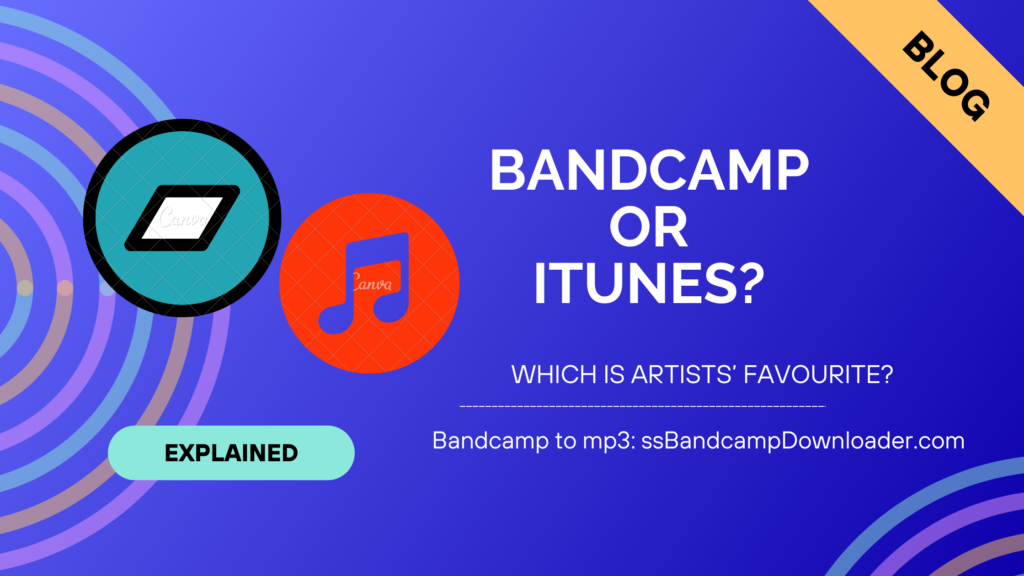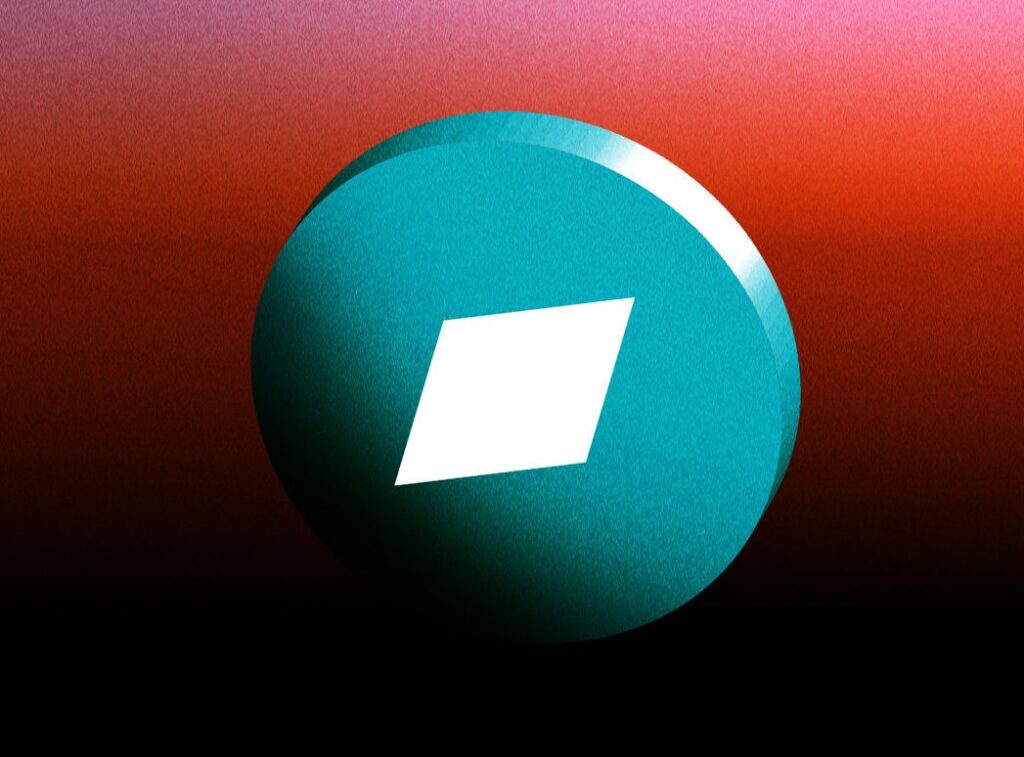In the ever-evolving landscape of the music industry, a debate quietly simmers among artists: the choice between two digital music platforms, Bandcamp and iTunes. But do artists prefer Bandcamp over itunes? If so, why?
This debate isn’t merely about where musicians choose to showcase their work; it’s a matter of artistic independence, revenue generation, and direct fan interaction.
In this exploration, we delve into the preferences of artists when it comes to these platforms, dissecting the factors that drive their decisions.
From Bandcamp’s artist-centric ethos to iTunes’ historical prominence, we aim to shed light on the intricate dynamics that influence this pivotal choice, ultimately unveiling the artist’s perspective on these digital music giants.

Bandcamp: The Artist-Friendly Platform
When it comes to platforms that prioritize artists and their creative freedom, Bandcamp stands out as a shining example. Unlike many other digital music distribution platforms, Bandcamp was designed with the artist in mind. It offers a range of features that empower musicians and foster a deeper connection with their audience.
At the core of Bandcamp’s appeal to artists is the level of control it affords them over their music. Unlike iTunes, where pricing and distribution are often tight, artists on Bandcamp have the flexibility to set their own prices for albums, singles, and merchandise.
This freedom allows them to experiment with different pricing models, offer special deals to fans, or even choose to give their music away for free if they wish. Such autonomy is invaluable to many musicians who want to maintain control over their artistic work.
Another significant advantage of Bandcamp is the direct interaction it enables between artists and their fans. Through the platform, musicians can communicate with their audience, share updates, and even respond to feedback directly.

This personal touch fosters a sense of community and allows artists to build stronger, more loyal fan bases. It’s a far cry from the more distant relationship often found on iTunes, where artists may not even know who their listeners are.
Furthermore, Bandcamp has gained favor among artists for its fair revenue-sharing model. The platform takes a modest percentage of sales, allowing a more substantial portion of the revenue to go directly to the artist.
This contrasts with the traditional music industry model, where artists often receive only a small fraction of the proceeds from their work. Bandcamp’s commitment to equitable compensation resonates with many musicians who are looking for a platform that values their craft.
In summary, Bandcamp’s artist-friendly approach, which includes pricing control, direct fan interaction, and a fair revenue-sharing model, makes it a compelling choice for artists seeking independence and a closer connection with their audience. It’s these very features that continue to draw musicians to the platform, challenging the dominance of more conventional digital music distribution methods like iTunes.
iTunes: The Legacy Digital Music Store
For many years, iTunes reigned as the undisputed king of digital music stores, and it continues to hold a special place in the history of the music industry. However, its approach to working with artists and its role in the music ecosystem have evolved significantly over time.
iTunes, once synonymous with digital music, was a pioneer in the transition from physical CDs to digital downloads. It offered a vast catalog of songs and albums, allowing consumers to purchase and download music to their personal libraries.
This format gave artists a digital platform to showcase their work to a global audience, but the dynamics of the platform favored a different approach compared to Bandcamp.
One of the notable features of iTunes was its consistency in pricing and distribution. Songs and albums on iTunes typically adhered to standard pricing structures, and Apple tightly controlled the platform’s interface and user experience.

While this provided a sense of uniformity and accessibility for consumers, it limited the level of creative freedom that artists could exercise compared to Bandcamp’s flexible pricing options.
Over time, iTunes began to shift its focus with the rise of streaming platforms. Apple Music, launched by Apple in 2015, marked a significant change in the company’s music strategy. While iTunes continued to exist, it became evident that the future of music consumption was moving toward streaming, where artists earned royalties based on plays rather than one-time purchases.
For artists, iTunes presented both advantages and limitations. It provided a global platform for exposure, but the revenue-sharing model meant that artists often received a smaller portion of the sales revenue compared to Bandcamp’s more artist-friendly approach. Additionally, the direct connection between artists and fans was less emphasized on iTunes, as the platform primarily served as a storefront for music consumption.
In recent years, the prominence of iTunes has waned, and its role in the music industry has evolved in response to changing consumer preferences. Nevertheless, it still serves as a historical landmark in the transition from physical music to digital downloads, offering valuable insights into the evolving dynamics between artists, platforms, and music consumers. While it may not align with the artist-centric ethos of Bandcamp, iTunes has played a pivotal role in shaping the digital music landscape.
The Preference Factors
Artists’ preferences between Bandcamp and iTunes are shaped by a multitude of factors, reflecting their unique goals, values, and artistic visions. To understand these choices, it’s essential to delve into the key factors that influence whether musicians opt for one platform over the other.
- Artistic Independence: At the heart of this debate lies the question of creative control. Bandcamp’s laissez-faire approach to pricing and content allows artists to express themselves freely. They can experiment with their music, choose to release singles, EPs, or albums, and even set their own pricing – decisions that might not be as flexible on iTunes. This artistic autonomy appeals to those who want to chart their own path without conforming to industry norms.
- Revenue Potential: For artists seeking sustainable incomes from their craft, revenue potential is a paramount consideration. Bandcamp’s revenue-sharing model, which offers a larger slice of the pie to artists, can be enticing. In contrast, iTunes’ revenue-sharing mechanism, though historically standard, has faced criticism for providing artists with a smaller share of sales. This disparity can significantly impact an artist’s income.
- Fan Engagement: Direct fan interaction is a feature that sets Bandcamp apart. Musicians can engage with their audience through messages, emails, and personalized updates. This personal connection fosters a sense of community and loyalty among fans. On iTunes, this level of engagement is less prominent, with artists often having less direct contact with their listeners. This factor can influence artists who prioritize building strong, personal relationships with their fanbase.
- Brand and Reputation: The choice between Bandcamp and iTunes can also be influenced by a musician’s perception of the platforms’ brand and reputation. Bandcamp is celebrated for its artist-friendly ethos, fostering goodwill among artists and fans alike. iTunes, with its historical dominance, retains a sense of legacy, but perceptions of its artist-friendliness may vary. Some artists may align with the innovative spirit of Bandcamp, while others might prefer the established legacy of iTunes.
In exploring these preference factors, it becomes evident that the decision between Bandcamp and iTunes is not a one-size-fits-all choice. Artists weigh these considerations against their unique circumstances, goals, and values. Some may find Bandcamp’s artistic freedom and fan engagement irresistible, while others might appreciate iTunes’ historical significance and global reach. Ultimately, artists’ choices between these platforms are a reflection of their individual journeys in the ever-evolving music industry.
The Impact on Music Consumers

The preferences of artists between Bandcamp and iTunes don’t just affect the creators themselves; they have tangible consequences for music consumers as well. The choices made by artists regarding these platforms can shape the availability of music, its pricing, and even the perceived quality and authenticity of the music.
- Availability and Pricing: The platform chosen by an artist can directly impact the accessibility and pricing of their music. On Bandcamp, artists have greater control over pricing, often offering a range of options from free downloads to name-your-price models. This variety allows consumers to choose how much they want to pay for music. On iTunes, pricing is typically more standardized, and songs and albums come with fixed price tags. This can lead to variations in what consumers are willing to pay for the same music depending on the platform.
- Direct Fan Engagement: The degree of fan engagement facilitated by a platform can influence the overall music consumption experience. On Bandcamp, artists can engage with fans directly, providing updates, insights, and a more personal connection. This can enhance the fan experience, creating a sense of community around the music. In contrast, iTunes offers a more transactional experience, where music consumption is divorced from direct interaction with the artist. This difference can impact consumers’ connection to the music and the artist.
- Perceived Authenticity: The platform an artist chooses can also influence how consumers perceive the authenticity of their work. Bandcamp’s emphasis on artist control and creative freedom may resonate with consumers who value independent and authentic music. They may see Bandcamp as a platform where artists can express themselves genuinely. iTunes, due to its historical dominance and standardized approach, might be perceived differently, potentially leading some consumers to associate it with more mainstream or commercial music.
Overall, the impact on music consumers is multifaceted. The choices made by artists in terms of platforms can result in varying music availability, pricing models, and fan engagement experiences. Additionally, these choices can shape consumers’ perceptions of the authenticity and artistic independence of the music they consume. As artists navigate their preferences between Bandcamp and iTunes, consumers, too, are indirectly influenced by these decisions in their music discovery and consumption journey.
The Changing Landscape: Streaming Services
As the digital music landscape continues to evolve, streaming services have emerged as a dominant force, reshaping the way both artists and consumers engage with music.
The rise of platforms like Spotify, Apple Music, and Tidal has had a significant impact on artists’ preferences between Bandcamp and iTunes.
Streaming services represent a departure from the traditional model of purchasing and downloading music. Instead, they offer music on-demand through vast libraries, allowing users to listen to songs and albums without owning them. This shift has prompted many artists to reconsider their distribution strategies.

For artists, streaming services provide a different revenue model compared to platforms like iTunes and Bandcamp. Instead of earning money through individual sales, artists receive royalties based on the number of streams their music garners.
While this model can be less lucrative on a per-stream basis, it offers the potential for continuous income as long as the music remains popular.
The growth of streaming platforms has also led to a shift in how music is consumed. With the convenience of streaming, listeners have access to a vast catalog of music at their fingertips, making it easier to discover new artists and explore diverse genres.
This accessibility has created both opportunities and challenges for artists seeking to gain visibility in an increasingly competitive landscape.
Some artists have embraced streaming services as a way to reach a global audience and generate consistent streams of income. Others, however, remain critical of the low per-stream payouts and the perceived devaluation of music. This has prompted debates within the music industry about fair compensation for artists.
In this evolving landscape, artists’ preferences between Bandcamp, iTunes, and streaming services are influenced by their goals, audience, and revenue expectations.
Some may choose to use streaming platforms in tandem with Bandcamp or iTunes, leveraging the strengths of each platform to reach a diverse audience. Others may prioritize one platform over the others based on their specific needs and values.
The emergence of streaming services has added a new dimension to the choices artists make regarding music distribution and consumption. It reflects the ever-changing nature of the music industry, where artists must adapt to new technologies and business models to navigate the complex terrain of music promotion and revenue generation.
The Future Outlook
As artists continue to navigate the ever-changing landscape of the music industry, the future outlook for platforms like Bandcamp and iTunes remains a subject of speculation and debate. Predicting the trajectory of these platforms and their role in the music ecosystem is essential for both artists and music consumers.
- Bandcamp’s Evolution: Bandcamp, with its artist-centric approach, has garnered a loyal following among independent musicians and labels. Its commitment to transparency and fair compensation resonates with many artists seeking autonomy. The future for Bandcamp may involve further innovation in supporting artists’ needs, potentially expanding its reach and impact in the music industry.
- iTunes’ Evolution: iTunes, once the dominant force in digital music sales, has experienced a decline in relevance with the rise of streaming platforms. Its future may involve a continued pivot towards the streaming model, especially with the presence of Apple Music. iTunes may evolve into a complementary service rather than a primary sales platform.
- Emerging Alternatives: The changing landscape has given rise to alternative distribution models and platforms. Niche platforms that cater to specific genres or artistic niches are gaining traction. Additionally, self-distribution models are becoming more accessible to independent artists, allowing them to have greater control over their music careers.
- Streaming Dominance: Streaming services like Spotify and Apple Music are likely to maintain their dominance, with their convenience and extensive libraries appealing to a broad audience. The challenge for artists on these platforms will be to stand out amid the vast competition and to negotiate fair compensation.
- Impact on Artists: The future will also bring ongoing discussions about fair compensation for artists, particularly in the streaming era. Advocacy for better royalty rates and revenue-sharing models will continue to shape the industry.
The future outlook for artists’ preferences between Bandcamp and iTunes, and their place in the music ecosystem, is marked by uncertainty and dynamism. The music industry will continue to adapt to new technologies, business models, and consumer behaviors.
Artists and music consumers alike will need to stay attuned to these changes and make strategic decisions based on their goals and values in this ever-evolving landscape.
The choices artists make regarding distribution platforms will continue to be influenced by their vision for their music careers and their desire to connect with their audience in meaningful ways.
Conclusion
In a music industry constantly in flux, the choices artists make between Bandcamp and iTunes reflect the broader evolution of the digital music landscape. Bandcamp’s artist-centric ethos, with its pricing control, direct fan engagement, and fair revenue-sharing, appeals to those valuing artistic independence.
iTunes, once the titan, adapts within the streaming era. These preferences reverberate through music accessibility, pricing, and perceptions of authenticity for consumers. As streaming services take center stage, artists face new challenges and opportunities.
The future is marked by uncertainty, but what remains clear is that artists’ choices are emblematic of their pursuit of creative freedom, fair compensation, and direct connection with fans in an industry perpetually in motion.
FAQs
Bandcamp is a digital music platform known for its artist-friendly approach. Artists prefer it over iTunes because it offers them control over pricing and content, direct fan interaction, and a fair revenue-sharing model. These features empower musicians to maintain artistic independence and build strong fan communities.
Bandcamp often provides artists with a larger share of sales revenue due to its fair revenue-sharing model. In contrast, iTunes historically offered a standard revenue-sharing approach that provided artists with a smaller portion of sales. However, with the shift towards streaming, revenue dynamics have evolved.
Artists’ platform choices can affect consumers in terms of music availability and pricing. Bandcamp offers more flexible pricing models, while iTunes tends to have fixed pricing. Additionally, Bandcamp’s direct fan engagement can enhance the consumer experience, creating a sense of community around the music.
Streaming services like Spotify and Apple Music have revolutionized music consumption, shifting from ownership to on-demand access. Artists earn royalties based on the number of streams, impacting their revenue model. Streaming services have also made it easier for consumers to discover new music across various genres.
The future is marked by uncertainty, with platforms like Bandcamp and iTunes evolving to adapt to changing consumer behaviors. Streaming services will likely continue to dominate, but artists will need to navigate challenges like standing out in a crowded field and advocating for fair compensation. The key for artists is to align their choices with their individual goals and values in this ever-evolving landscape.
